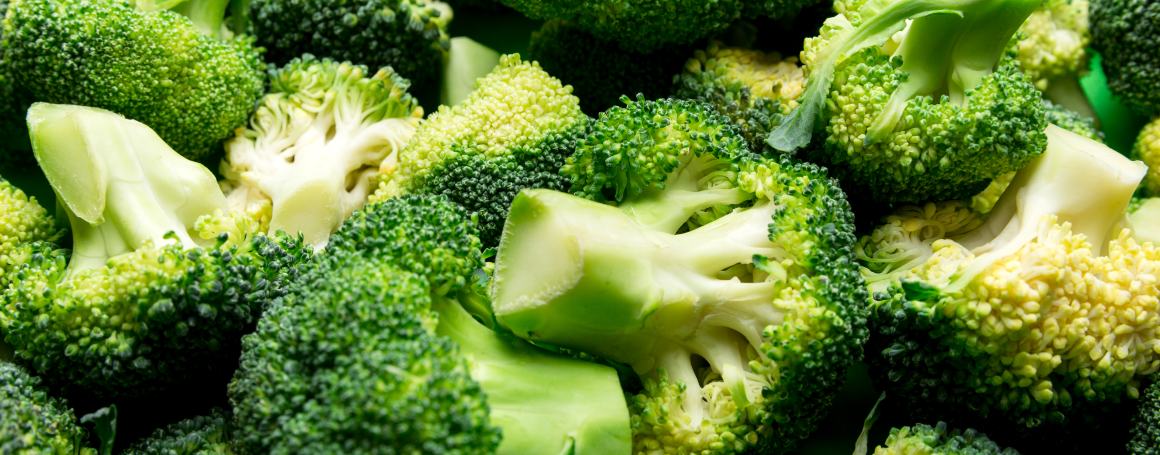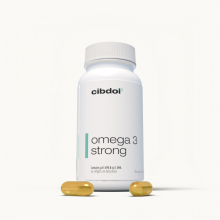Is Broccoli High in Omega-3?
Published:
Broccoli is one of the most nutritious vegetables, packed with vitamins, minerals, fiber and antioxidants. Known for benefits like cancer prevention and detoxification support, broccoli is regarded as a superfood. But is it also a good source of essential omega-3 fatty acids? Let’s analyze the omega-3 profile of broccoli and how to ensure adequate intake.
Contents:

Overview of Omega-3 Fatty Acids
Omega-3 fatty acids are polyunsaturated essential fats necessary for human health. The main types are:
- ALA (Alpha-Linolenic Acid) - found in plants and can convert in the body to active EPA and DHA
- EPA (Eicosapentaenoic Acid) - supports heart health and reduces inflammation
- DHA (Docosahexaenoic Acid) - critical for brain function and development
Experts recommend adults consume at least 250-500 mg daily of EPA and DHA. However, average intakes typically fall below this guideline.
While fatty fish provide EPA and DHA directly, certain plant foods like walnuts, flaxseeds and leafy greens supply ALA for conversion to the active forms.
Evaluating the Omega-3 Content in Broccoli
According to the USDA Nutrient Database, one cup (91g) of chopped boiled broccoli contains:
- Total Fat: 0.4 g
- ALA (Omega-3): 68 mg
So in a serving of broccoli, you would get about 68 mg of the ALA omega-3 fatty acid. While not extremely high, this equates to 5-10% of the recommended daily intake, making broccoli a decent plant-based source.
However, broccoli’s omega-3 content is exclusively ALA. It does not provide the bioactive EPA and DHA forms found in fatty fish and supplements.
Why Broccoli Has Low-Moderate Omega-3s
There are several reasons why broccoli is not among the highest omega-3 sources:
- Broccoli is very low in overall fat, providing mostly vitamins, minerals and phytochemicals.
- Omega-3s are found in highest amounts in fatty plant foods like walnuts, chia, flaxseeds and their oils.
- Leafy and cruciferous vegetables contain antioxidants but not large lipid levels.
- The minimal fats broccoli does contain are mainly monounsaturated, not polyunsaturated omega-3s.
However, broccoli still supplies a meaningful amount of ALA compared to fruits and vegetables lacking fat content.
Benefits Broccoli Provides
While moderate in omega-3 ALA, broccoli remains incredibly healthy thanks to:
- Sulforaphane – Potent antioxidant shown to support liver function and cellular health. May combat cancer.
- Vitamin C – Single serving provides 135% RDI vitamin C to support immune function and collagen formation.
- Vitamin K – Supplies 116% RDI vitamin K needed for proper blood clotting.
- Folate - Provides 14% RDI folate, a crucial B vitamin for nucleotide synthesis and neural tube development during pregnancy.
- Fiber – 5 grams per cup to support healthy digestion and heart health.
Broccoli also contains vitamin A, potassium, B vitamins and various antioxidants. It provides proven benefits for detoxification, digestion, antioxidant status and more.
Increasing Omega-3s in Broccoli Dishes
While broccoli itself is not a prime source of omega-3 fats, combining it with certain ingredients substantially increases the omega-3 content of recipes:
- Baked broccoli with slivered almonds (500mg ALA per serving)
- Steamed broccoli with sesame oil (1,300mg ALA per serving)
- Broccoli casserole with walnut crumble (2,500mg ALA per serving)
- Broccoli cheddar soup with flax oil swirl (7,000mg ALA per serving)
- Broccoli salad with chickpeas and sunflower seeds (600mg ALA per serving)
- Broccoli stir fry with edamame (500mg ALA per serving)
Using omega-3-rich nuts, seeds, oils and legumes turns broccoli dishes into excellent sources of these essential fatty acids.
Top Food Sources of Omega-3
To satisfy your daily omega-3 requirements, emphasize these whole foods offering highest amounts:
ALA Plant Sources:
- Flaxseeds: 7,196 mg per 100 grams
- Chia seeds: 5,060 mg per 100 grams
- Walnuts: 2,570 mg per 100 grams
- Soybeans: 1,241 mg per 100 grams
- Navy beans: 237 mg per 100 grams
- Kidney beans: 406 mg per 100 grams
EPA/DHA Seafood Sources:
- Salmon: 4,123 mg per 100 grams
- Anchovies: 951 mg per 100 grams
- Atlantic mackerel: 1,699 mg per 100 grams
- Rainbow trout: 983 mg per 100 grams
- Sardines: 2,205 mg per 100 grams
- Caviar: 1,086 mg per 100 grams
Combine both plant and seafood sources for optimal omega-3 intake.
Should You Take an Omega-3 Supplement?
In addition to food sources, taking a fish, krill or algal oil supplement can help ensure adequate EPA/DHA intake if your diet is low in fatty fish.
Look for quality third-party tested brands clearly listing amounts of EPA/DHA per dosage on the label.
Key Takeaways on Broccoli and Omega-3
- Broccoli provides 68mg omega-3 ALA per cup, making it a low-moderate source.
- Broccoli is prized for its sulforaphane, vitamin C, vitamin K and other phytonutrients.
- Boost broccoli by pairing it with omega-3-rich nuts, seeds, oils and legumes.
- Focus on fatty fish, flax, chia and walnuts for optimal dietary omega-3s.
- Supplements can supply preformed EPA/DHA when food sources fall short.
In summary, while broccoli itself is not a prime source of omega-3 fats, it contributes a modest amount and can be incorporated into omega-3-rich recipes. Enjoy broccoli for its many nutrients as part of a varied diet focused on top omega-3 foods.










